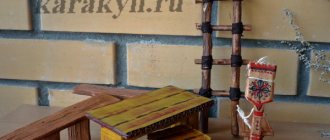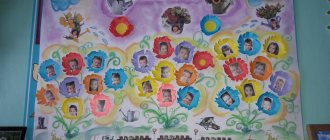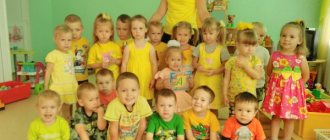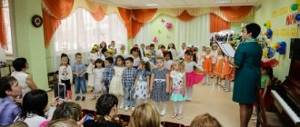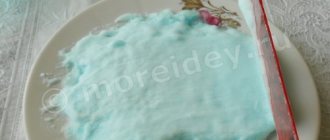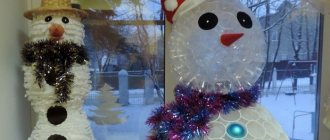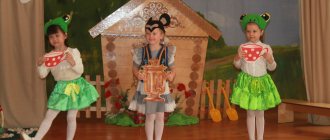Features of paper models of huts of different nationalities
Most often, you have to make a model of a hut out of paper specifically for kindergarten. At the same time, the craft may look completely different, since each nationality has its own characteristics in terms of building housing. Taking into account historical data, using ordinary paper and cardboard, you can get a historically accurate mini-hut.
Where are layouts on this topic useful?
Layouts on this topic will definitely be useful for crafts in kindergarten or junior school. An old paper hut can become the central element of a composition on any theme.
A paper house can be an excellent basis for making New Year's decorations if you place a diode inside that will glow and create a winter atmosphere. Using the same principle, you can make a night light for a child’s room.
Open layouts can be used for playing with children or become an exhibit in a children's exhibition with a historical twist. The open model is an excellent demonstration of the way of life of that time.
Examples of ready-made paper and cardboard layouts
A model of a Russian hut made of paper can be an open structure, which shows the interior decoration of the home of that time, or a closed house. In any case, they are mainly made from paper or cardboard:
- Open layout with recreated pieces of furniture.
- A variant of the simplest layout, which is made from corrugated cardboard.
- Models of fairy-tale Slavic huts for children's crafts.
The variety of crafts of this type surprises with non-standard solutions and fantasy elements. And although at first glance the topic is quite narrow, you can still be creative here.
How to make an old hut
To create a model of an ancient hut, you first need to familiarize yourself with historical documents that describe the appearance of the Slavic home. Usually this is a log house, which was formed from logs that were laid in a certain sequence. The main feature of a village hut is its painted windows with beautiful shutters. In accordance with these data, it is possible to imagine exactly what a Russian hut looks like, and, therefore, it will be possible to develop a reliable layout.
Required materials and tools
To make a peasant hut you need the following tools and materials:
- office white paper;
- glue with a brush or glue stick;
- Double-sided tape;
- cardboard;
- gouache brown, gray and black;
- colored paper for decoration;
- thick and thin brushes;
- cardboard box;
- scissors, ruler and simple pencil.
Other finishing materials will be needed if a complete composition with a yard and trees is to be formed.
Step-by-step assembly of a detailed layout with step-by-step photos
The principle of assembly and formation of individual parts can be described in the following algorithm:
- Each sheet of white paper should be divided into 3-4 equal parts along the short side. You will get wide stripes. It is necessary to form tubes from strips, which are twisted into several layers and glued with PVA glue. Using double-sided glue, glue 4 tubes perpendicularly to the cardboard box, which will become the support of the roof in the future and will help determine the parameters of the hut. Further along the supports in tiers you can glue other paper tubes to each other.
- When the walls almost cover the vertical elements, you can stop. Now the white “logs” can be painted with brown gouache. You need to wait until it dries completely. While this is happening, you can begin making the roof.
- Prepare a sheet of cardboard and fold it in half to form an exact bend. Cut strips 3-5 cm wide from dark colored paper (black, brown). Form waves on one side of each strip, cutting them out with scissors. Moving from the central fold on the cardboard sheet, glue the wavy strips to the very edges. On one side you can glue a pipe, which can be easily made from a cardboard strip.
- Now you can glue the roof to the base of the walls. The holes that are formed on the sides can be sealed with triangles made of colored cardboard, which are easily attached to the base using double-sided tape.
- The next stage will be the production of windows with carved elements and doors. These parts are easy to make from colored paper. The base of windows and doors is glued to the “logs”.
- This way you get a beautiful log hut made of paper. The work will take about 3 hours. But making such a model will be a pleasant experience for both the child and the parent.
If you expand the composition, the layout of the hut with a yard will look like this.
Plain paper is also used to make fences, trees, and interior buildings.
Udmurskaya hut
The Udmurts are a people with a rich history. Their homes are quite similar in design and furnishings to Russian huts. A distinctive feature of the houses was their decoration - brightly painted textiles. The main decoration of the house was always a huge stove and painted chests in which “family wealth” was stored.
Open model of an Udmurt hut:
Tatar hut
The Tatars' homes were also decorated in accordance with religious characteristics and the foundations of Eastern culture. Outwardly, there is no difference from the decoration of a Russian hut, but in most families there was a clear division of housing into male and female halves. At the same time, the center of the composition is a large white stove and a bright tactile design with oriental motifs.
Expanded model of a Tatar hut:
Russian traditional
The Russian folk hut has the main feature of an always clean, whitewashed huge stove, which was the center of the entire house. Additionally, it was painted with paints to create bright accents in the interior of a simple house.
How to create an open model of a Russian hut with your own hands from cardboard:
Applications for children
The model of a hut for a kindergarten can be a regular appliqué. At the same time, there are several options for making crafts of this type, where the main feature is a certain level of complexity. The simplest application of a Russian hut:
- Prepare several identical strips of brown paper. The façade (base) of the hut will be formed from them.
- You will need a triangle, the base of which will be the same length as the strips for the facade.
- 2 rectangles that will become windows. And 1 more rectangle is narrower, but long - a pipe.
Next, all the elements are glued to a sheet of cardboard as follows. In the older group of kindergarten, you can use the same example of appliqué, but with more complex elements - carved shutters and intricate roof framing. You can complement the picture with other elements - trees, a bench, a well.
Cutting templates
You can print a ready-made template with all the necessary colors. The workpiece will only need to be glued together, forming the desired shapes. Examples of cutting templates:
- A detailed sketch, the assembly of which requires certain skills and knowledge.
- A simple cutting template consisting of 2 parts.
- Template for making a flat swing house.
You can prepare a template for cutting yourself if you have drawing skills.
Design and decoration ideas
An open cardboard hut is usually filled with furniture and textile elements. This is a mandatory point when making a model of a home. What can be used in the decorating process:
- Usually all furniture is made of cardboard and then painted with gouache.
- You can make curtains for the windows from light colored fabric. The same principle is used to make a tablecloth for a table and a bedspread for a bed.
- The main object - a white stove - can also be made from cardboard, but it is better to use polystyrene foam.
- You can lay a bunch of branches near the stove. And you can put finely broken branches in the oven itself.
- The table can be decorated with a samovar, the shelves with “clay” jugs. The dishes can be made from plasticine, which it is then advisable to open with glue or varnish.
Making household utensils, furniture and selecting textiles is a rather interesting process of arranging the home of the Slavs. Additionally, you can even build a “red corner” in the hut in order to accurately follow historical data.
There are various schemes according to which you can create a paper model of a hut of any nationality. The main thing is to make historical inquiries before starting work. The most interesting thing is to make an open model of the inside of the hut. Here you can show all your imagination and skill. Children will especially enjoy the process of working on such a product.
Mini-museum “Russian Hut” in kindergarten
Mini-museum of the kindergarten “Russian Izba”.
The further into the future we go,
The more we value the past
And we find beauty in the old,
At least we belong to something new
Today we are beginning to look at many things differently, we are rediscovering and re-evaluating many things, this also applies to the past of our people. The most pressing problems include the formation of patriotic feelings in children and the development of spirituality. Deep spiritual, creative patriotism must be instilled from early childhood. Native culture, like father and mother, should become an integral part of the child’s soul, the beginning that gives rise to personality. Now, with the return of national memory to us, we need to know more and more about Russian culture, customs and traditions, about how our ancestors lived, what they wore, how they celebrated holidays, what they ate and what they drank. We must know it ourselves and introduce it to our children.
We consider it necessary to convey to our students that they are part of folk culture and to educate children in national traditions.
That’s why we have created a mini-museum “Russian Izba” in our kindergarten.
The idea to create it arose a long time ago. What goals and objectives did we set when creating the mini-museum:
1. Expand children’s ideas about life, way of life, traditions and rituals of the Russian people.
2.Develop children's imagination.
3. Enrich children's vocabulary with names and expressions from the Russian dictionary.
4. Conduct work on the spiritual and moral education of children.
It all started with introducing preschoolers to folklore: songs, nursery rhymes, riddles, fairy tales, games. In many of them there were words and expressions incomprehensible to children: upper room, cast iron, bast shoes, krynka. Teachers had to explain their meanings based on photographs or pictures. But this turned out to be not enough, and the idea arose of demonstrating real ancient objects of Russian life. We asked the students’ parents and employees to bring antique Russian things, utensils, tools, and we didn’t have to wait long for the result. Grandmothers gave embroidered towels and multi-colored homespun rugs; cast iron pots and grips were brought from the village. Children and their families searched for antique objects, dishes and kitchen utensils in abandoned attics and sheds. In these shared quests, the children learned interesting stories related to their families and pasts. Many exhibits for the museum were given to me by my grandmother Marfa Fedotievna Sorokina. I retold her stories about life to my children. They listened with great interest and asked to repeat this or that story. With great interest, the children participated in the making of rag dolls, helped to ferment cabbage, sculpted dishes from clay, and then painted them. And with what a sense of pride and self-importance they brought any exhibit to kindergarten. So, bit by bit, museum exhibitors began to appear. They allocated a room and began to furnish the hut. At first, our mini-museum occupied part of the group room. Then it was moved to the kindergarten hall, where it became available to everyone: both children and parents. In the hut there is a Russian stove and household utensils: a grip, a poker, cast iron pots, a cradle with a baby, a chest, an old iron, a samovar, earthenware, a table with benches and many different utensils. Entering the mini-museum, in the front “red” corner there is a table with a samovar on it, tea cups, and bagels. Above the table is an icon image of the Virgin Mary and Child. This image expresses, as it were, the protection of children, the patronage of the Holy Virgin Mary for children. Next to the table there is a chest where the wealth of the hut is stored: shawls, sundresses, shirts and other things. Next to the chest there is a spinning wheel, a spindle on which the conjugated threads were wound. Next to the spinning wheel is a stand with a tow (not spun wool). In another corner of the hut there is a Russian stove (imitation), on which there are cast iron pots of different sizes, and firewood lies near the stove. The little brownie Kuzya perches in the corner; he is the head of the house, overseeing order, prosperity and peace in the house.
Children are not afraid of Kuzya, although his hair is tousled; they know him as the keeper of the hearth. Near a warm place in the hut there is a cradle (a wooden children's bed). There is a baby (doll) in the cradle. You can rock the cradle while singing lullabies. Children, going to the museum, can touch everything with their hands, look at everything, they are interested in listening to the owner of the hut, grandmother Arina, and grandfather. The owners of the hut often offer children various games, listen to Russian folk tales, ask riddles, and communicate with children using nursery rhymes, jokes, and proverbs. Interesting stories from the owner of the hut about the toys that children can see here: straw and wooden dolls. There are many things in a Russian hut: a washing board, a kerosene lamp, a rocker. Homespun rugs are laid on the floor. The entire furnishings of the hut show the home life of the Russian people.
Objects are arranged so that you can approach them, examine them and understand how they operate. Museum exhibits are used in theatrical activities and entertainment. The whole atmosphere in the museum makes it interesting for children to contemplate, learn, study, and play.
The mini-museum “Russian Izba” is used to conduct various classes in which children are educated morally, spiritually and acquire the initial basics of patriotism. Children’s spoken language also develops well, their vocabulary expands, children get positive emotions here and learn to imagine. Any museum exhibit can suggest a topic for an interesting conversation. For example, the topic “Toys of our grandmothers” will help children understand what our ancestors played with and what toys were made from. On the basis of the mini-museum we conduct educational educational activities and entertainment. Museum exhibits are constantly used by educators in classes on speech development, visual arts and manual labor.
Classes at the museum are taught by educators. During classes, teachers introduce children to folklore, household items, household utensils, customs and traditions of the Russian people, folk holidays, and folk arts. All material is presented to children in a playful way. This allows you to diversify the activity, making them brighter and more memorable.
Of particular interest to children is placing a cast iron pot in the stove, rocking a baby in a cradle, and singing a lullaby to him. During classes at the museum, children become familiar with the order of seating at the table and the purpose of kitchen utensils. But most importantly, children learn the rule of hospitality for which the Russian people are famous: “The rich you are, the happier you are,” “Like the hostess, so is the table.”
The goal of any exhibition is not only to show children ancient life, but also to convey to their understanding that this is an integral part of our culture.
The museums also host classes for the “Introducing Children to the Origins of Russian Folk Culture” club, where children learn in more detail about the life and lifestyle of our ancestors.
The mini-museum “Russian Izba” helps to diversify the subject environment of the kindergarten, develop cognitive activity and enrich the spiritual and moral education of children, expand children’s understanding of their own spiritual closeness, the involvement of their “I” with other people who lived before, are living now, nearby.
The mini-museum “Russian Izba” was created in our kindergarten “Fairy Tale” in 2010. It was organized specifically to implement the general objectives of the educational institution’s program for the moral and patriotic education of preschoolers. The content of our mini-museum allows teachers to introduce children to our history, folklore, nature, everyday life and authentic antiquities. In addition, it contributes to the implementation of an integrated approach to teaching and the creation of a system of children's activities.
When organizing the mini-museum, the following principles were taken into account: integration, activity and interactivity, scientificity, natural conformity, cultural conformity, diversity, environmental friendliness, safety, globalism and regionalism, creativity. All these principles allow the museum to become part of the educational space of our kindergarten.
The museum contains very ancient relics of the Russian people, such as: a Russian stove, a cradle (shaky), a spinning wheel, a spindle, a samovar, a chest, a collection of toys in folk costumes, amulets and much more.
There is also an extensive material of decorative elements presented here. And for people who are deeply interested in the history of their people, there is teaching material: books, notes, games, audio and video aids.
Of course, in a kindergarten setting it is impossible to create an accurate exhibition that meets the requirements of museum work. That's why we created a mini-museum. The “mini” part of the word in our case also reflects the age of the children for whom it is intended and the size of the number of objects in the museum is small. An important part of the museum: the participation of kindergarten employees and parents in the accumulation of household items of the Russian people.
The main thing is that we achieved our goal: we created a general development space - a mini-museum. He helps educators carry out great work on spiritual and moral education. He united the team and gave the opportunity for creative activity.
Thematic plan for conducting game excursions in the museum in the second junior group
| Date of. | Subject. | Target. Use of museum attributes. | Integration with other activities. |
| September. | “You are welcome to the hut” | Forming ideas about the hut, getting to know the owner. | Folk game “Katya, Little Katya” |
| October. | "Soroka-magpie" | Form an idea of kitchen utensils: clay pot, bowl | Playing out the nursery rhyme “Magpie” |
| November. | Ay, swing, swing. | Getting to know the cradle, the unsteady one. | Reading “So People Are Sleeping”, game “Bounce, Bounce” |
| December. | Some water, some water. | Introducing the washbasin. | Singing the song “Water-voditsa” |
| January. | Water is on a duck's back, Vanya's skin is thin. | Consolidating ideas about a shaky basin and a washstand. | Performing nursery rhymes about washing, lullabies. |
| February. | The hut is made of brick, sometimes cold, sometimes hot | Show the purpose of the stove, cast iron, and grip. scoop. | Folk game "Lada" |
| March | Our hostess knew how. | To consolidate the idea of using a broom, golik, | Learning the nursery rhyme “Our Mistress” |
| April | Kolobok is a ruddy side. | Introduce such museum exhibits as a sieve and rolling pin. | Dramatizing a fairy tale |
| May. | A horned goat is coming. | Introduce the purpose of the jug and milk pan. | Use nursery rhymes about cows and goats |
Thematic plan for conducting game excursions in the museum in the middle group
| Date of. | Subject. | Target. Use of museum attributes. | Integration with other activities. |
| September. | “Dear guests are welcome” | Continue to introduce the hut, show the purpose of the red corner. | Let's try the treat - oatmeal jelly. Memorizing "Window-Autumn" |
| October. | “How Ivanushka was at the fair” | Continue to introduce the attributes of festive folk costume (ribbons, beads) | Playing out the nursery rhyme “Ay, tari, tari, tari” |
| November. | “Mola went for water” | Consider the buckets and rocker. | Dramatization of the song. Rocker decoration |
| December. | "From Grandma's Chest" | Continue your acquaintance with folk toys (spillins, nesting dolls, whistle toys) | Making a twisted doll |
| January. | "Come to the Upper Room" | Rolling pin, oven, brow, flood | Telling the fairy tale “The Fox with a Rolling Pin” |
| February. | Our friends - spoons, bowls, mugs | Introduce ancient wooden utensils. Wooden spoons as a household item and musical instrument. | Productive activity “Decorate the dishes” |
| March | "Oh, my bast shoes" | Show the bast shoes and introduce them to their purpose. | Fairy tale "Bubble, straw and bast shoe" |
| April | "The Landlord's Helpers" | Clarify your understanding of such museum exhibits as a sieve, rolling pin, samovar | Excerpt from the fairy tale “Fedorino’s grief” |
| May. | “The chicken in the hut is sweeping with a broom | Broom, golik, dustpan. | Folk riddles |
Thematic plan for conducting game excursions in the museum in the senior group
| Date of. | Subject. | Target. Use of museum attributes. | Integration with other activities. |
| September. | “How Maryushka washed and ironed her clothes” | Show irons (heat and charcoal), rubel, roller. Introduction to household items used in washing (trough, board), | Folk riddles about the iron. Washing handkerchiefs. |
| October. | "Magic knitting needles" | Introduce knitting needles and knitting with them. Examination of woolen items, conversation “Where does wool come from” | Productive activity “Let’s decorate Maryushka’s knitted things” |
| November. | Golden spindle | Introduce ancient tools and materials of traditional women's labor (Tow, spinning wheel, spindle) | Folk game "Spinning" |
| December. | Magic needle | The role of embroidery and patchwork products in creating home comfort. (valances, curtains, patchwork blankets, rugs) | Drawing patterns for embroidery with signs of Mother Earth |
| January. | How Maryushka raised her children. | Introduce the traditions of family upbringing and folk toys. | Makovsky’s painting “Peasant Children” Nursery rhyme “Lada-lada” |
| February. | Steam on top, heat below - this is a Russian samovar | Introduce the tradition of tea drinking. | Over the samovar we get acquainted with boring fairy tales. |
| March | Spring has come and brought the magpies. | Sieve, rolling pin, chest | We bake larks. |
| April | Clothes of our ancestors | Acquaintance with women's folk clothing (sarafan, kokoshnik), the features of its manufacture. | Singing "Be born, little white lenok" |
| May. | Farewell to the hut | To consolidate the idea of a museum as a place of immersion in the past, a place for storing ancient rare objects. | Folk riddles |
